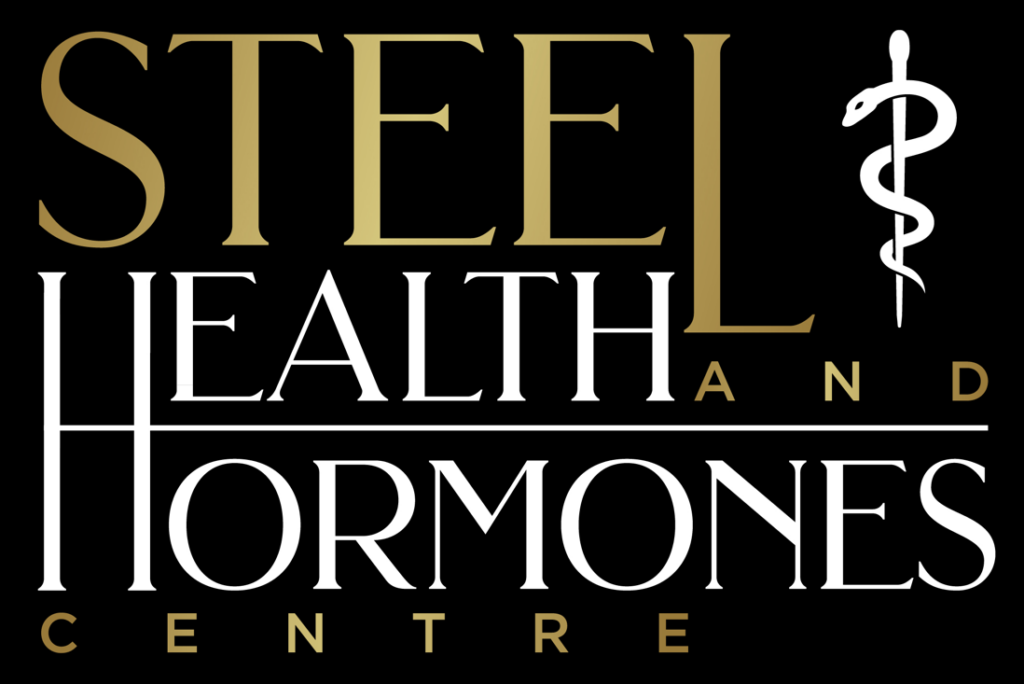One of the most sensitive conversations we have with men at Steel Health and Hormones Centre revolves around erectile dysfunction (ED). ED can affect confidence and quality of life, creating frustration for men and their partners alike. If you’re a man in the Pittsburgh area struggling with ED, this blog post is for you.
We’ll explore hormone optimization, conventional medication, and outpatient medical procedures we’ve used to help men find lasting relief. While these treatments are effective, they work best when combined with healthy lifestyle changes. Eating for your goals, exercising consistently, and managing stress are excellent complements to medical intervention.
It’s important to note that I am not a doctor. I am a 50% owner of Steel Health and Hormones Centre, alongside my partner, Dr. Ralph Petrarca. We’ve dedicated years to the science of preventative and regenerative medicine, but this article is not a substitute for medical advice. Always consult a qualified healthcare provider for diagnosis and treatment.
Testosterone Therapy for ED
About 70% of ED cases are believed to have an organic origin, meaning they stem from detectable changes in the body’s biochemistry. Key biochemical factors that contribute to ED include:
Hyperlipidemia (High Cholesterol)
- Hyperlipidemia can result from various causes, but in many men, it is linked to visceral fat—the harmful fat stored around the abdominal organs.
- Testosterone therapy can reduce visceral fat, improving cholesterol levels over time, especially when combined with regular exercise. This creates a positive cycle: optimized testosterone enhances workout results, which further reduces visceral fat.
Insulin Resistance
- Insulin resistance occurs when glucose in the blood triggers excessive insulin secretion, but cells become desensitized to it, leaving blood sugar levels elevated. This can contribute to ED.
- Testosterone helps cells absorb glucose more effectively, reducing stress on the pancreas and alleviating issues associated with insulin resistance.
Endothelial Dysfunction
- The endothelium is the layer of cells lining your arteries, responsible for regulating blood flow. Dysfunction can restrict blood flow to critical organs, including the penis.
- Studies on testosterone’s impact on endothelial function show mixed results. Some indicate it improves blood flow, while others suggest long-term therapy may have a restrictive effect.
- However, based on our experience, many men report improved erection quality within weeks of starting testosterone therapy, which may suggest a short-term benefit on blood flow.
In summary, testosterone therapy not only helps men improve their overall health but also often enhances erection quality. While its impact on blood flow remains debated, our patients frequently experience significant improvements in the short term.
PDE-5 Inhibitors
Phosphodiesterase Type-5 inhibitors (PDE-5 inhibitors) are medications commonly advertised for ED. They work by relaxing smooth muscle tissue (like the penis) to improve blood flow. Common PDE-5 inhibitors include:
- Sildenafil (Viagra)
- Tadalafil (Cialis)
- Vardenafil (Levitra)
The main distinction between these medications is their duration of action:
Sildenafil and Vardenafil act quickly but last for only a few hours, making them ideal for predictable schedules.
Tadalafil takes longer to reach full effect but lasts significantly longer, which is better for less predictable schedules.
At Steel Health and Hormones Centre, we often prescribe these medications as troches—waxy substances that dissolve under the tongue. Troches provide faster absorption and more reliable effects compared to traditional capsules.
For men who don’t respond well to optimized testosterone and PDE-5 inhibitors, we offer a minor medical procedure that can stimulate blood flow and enhance the effectiveness of these therapies.
The P-Shot
The Priapus Shot (P-Shot) is a non-surgical regenerative treatment using Platelet Rich Plasma (PRP) therapy. It leverages your body’s natural healing processes to repair damaged tissue.
Here’s how PRP therapy works:
- Blood is drawn from your body.
- Centrifugal forces separate platelet-rich plasma containing growth factors.
- The plasma is injected into the targeted area to stimulate healing.
PRP contains:
- Platelet-Derived Growth Factor and Epidermal Growth Factor: Encourages new cell growth and division.
- Vascular Endothelial Growth Factor: Promotes new blood vessel formation, improving nutrient delivery.
- Stem Cell Attractants: While not stem cell therapy, PRP attracts stem cells to the injury site, where they aid in regeneration.
- Inflammation Modulators: Helps reduce post-treatment inflammation.
For men with ED, PRP can rebuild blood flow pathways in the penis, improving the effectiveness of PDE-5 inhibitors and overall erection quality. Some patients also report enhanced sensitivity after the procedure
Key Points
- Lifestyle changes and testosterone optimization form the foundation for treating ED.
- PDE-5 inhibitors, especially in troche form, can significantly improve erection quality.
- For persistent ED, the P-Shot offers a regenerative solution, enhancing blood flow and tissue health.
Take the First Step
If you’re struggling with ED, the expert medical staff at our Wexford and Delmont clinics are here to help. To learn more about your treatment options, fill out the contact form below. A team member will reach out within 24 hours to schedule your consultation.
Sources
https://onlinelibrary.wiley.com/doi/full/10.2164/jandrol.107.004630
https://academic.oup.com/jcem/article-abstract/93/1/139/2598345
https://www.ingentaconnect.com/content/ben/cdr/2012/00000008/00000002/art00006
https://www.nature.com/articles/nrendo.2013.122



